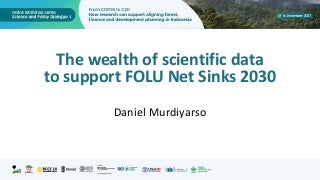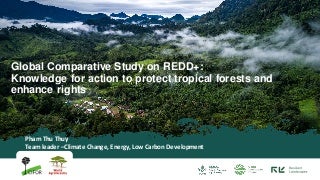Carbon stored in mangroves and wetlands (known as blue carbon) is playing an increasingly prominent role in discussions about the world’s emissions budget. Yet many questions remain about how coastal environments store and release CO2 and behave under climate change. A new study published in Nature Communications looks at the future of blue carbon, stressing the need for a better understanding of how coastal ecosystems can contribute to climate adaptation and mitigation. Blue carbon (BC) refers to organic carbon that mangroves, tidal marshes, seagrass, seaweed and other coastal and marine ecosystems capture and store. Scientists and the international community are exploring its potential to tackle climate change. The merits of these ecosystems go beyond carbon sequestration, protecting coastlines and securing livelihoods for local communities. But for BC to have a say in shaping climate action, blue carbon science needs a more solid footing, the study points out.
-
 Restoration
Restoration
-
 Plantations and tree crop commodities
Plantations and tree crop commodities
-
 Enhanced nutrition and food security
Enhanced nutrition and food security
-
 Biodiversity, safeguarding and conservation
Biodiversity, safeguarding and conservation
-
 Nationally determined contributions
Nationally determined contributions
-
 Bioenergy and biomaterials
Bioenergy and biomaterials
-
 Blue carbon and peatlands
Blue carbon and peatlands
-
 Climate change adaptation
Climate change adaptation
-
 Landscape governance
Landscape governance
-
 Gender
Gender
-
 Silvopastoral systems
Silvopastoral systems
-
 Market-based agroforestry-forestry
Market-based agroforestry-forestry
-
 Farm-forest policy interface
Farm-forest policy interface
-
 Agroecology
Agroecology
-
 Livelihood trajectory modelling and assessment
Livelihood trajectory modelling and assessment
-
 Inclusive finance and business models
Inclusive finance and business models
-
 Innovating finance for sustainable landscapes
Innovating finance for sustainable landscapes
-
 Public and private commitments to zero deforestation
Public and private commitments to zero deforestation
-
 Orphan tree crops
Orphan tree crops
-
 Effectiveness of approaches to sustainable supply
Effectiveness of approaches to sustainable supply
-
 Quality of FTA research for development
Quality of FTA research for development
-
 Sentinel landscapes
Sentinel landscapes
-
 Foresight
Foresight
-
 Seeds and seedlings delivery systems
Seeds and seedlings delivery systems
-
 Smallholder tree-crop commodities
Smallholder tree-crop commodities











